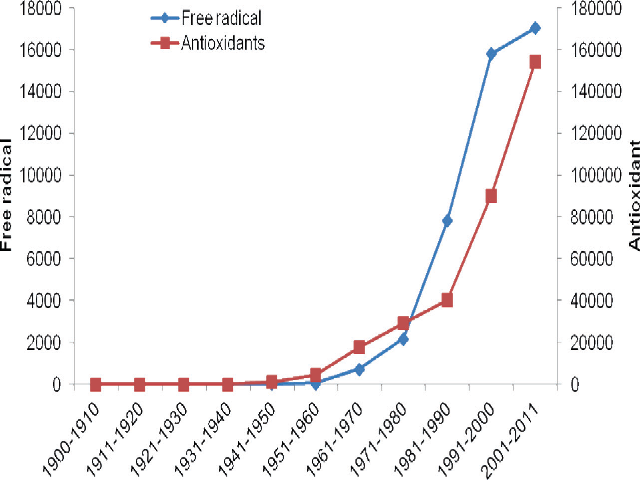Introducing a New Journal: Free Radicals and Antioxidants
DOI:
https://doi.org/10.5530/ax.2011.1.1Abstract
Welcome to a new journal exploring one of the most upcoming areas in the field of free radicals biology and medicine today- Free radicals and Antioxidants!
Living organisms are being continuously exposed to a wide array of insults that lead to the production of reactive oxygen species (ROS). Reactive oxygen species serve several physiological functions- they can activate signaling pathways in normal cells that in turn modulate physiological processes like inflammation, apoptosis, regulation of smooth muscle tone and leukocyte adhesion to the vascular endothelium.[1] The term ROS broadly refers to a family of highly reactive molecules, all of which share one common feature- the presence of oxygen. The ROS family comprises of three types of molecules, those that contain oxygen, termed as oxygen radicals (OH, O2- and NO), non-radical species (CO, ONOCO2-, N2O2, NO2, H2O2, ONO2-, O3, HOCl and O2) and free radicals.[2] “Free radicals” are defined as atoms, molecules or ions characterized by the presence of unpaired electrons. The latter characteristic makes them highly unstable, extremely reactive chemically and very short-lived[3]. The ability of oxygen to accept electrons from other molecules to form oxygen free radicals renders ROS highly toxic to living cells. While superoxide and hydrogen peroxide are among the most abundant reactive species generated in living cells, they are only moderately toxic. Hydroxyl radicals (.OH), on the other hand, are far less abundant, but highly reactive species believed to be responsible for most of the oxidative damage in aerobic cells. Faced with the barrage of potentially deadly reactive species, aerobically respiring cells have evolved a well-developed system to counteract the damaging effects of ROS- termed as the “antioxidant system”.[4] The imbalance between the production of ROS and the antioxidant defense mechanisms is called “oxidative stress” and can have several detrimental effects including causing genomic instability, even promote neoplastic transformation. Read more...
Downloads
Metrics





